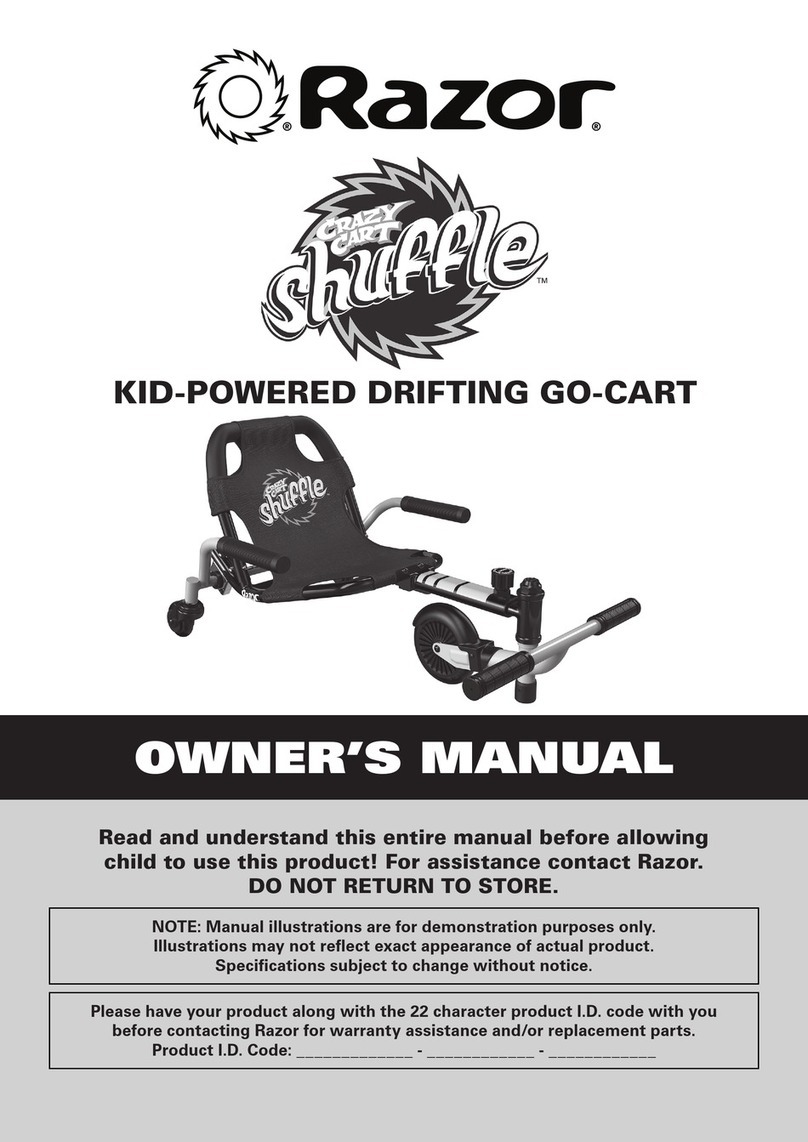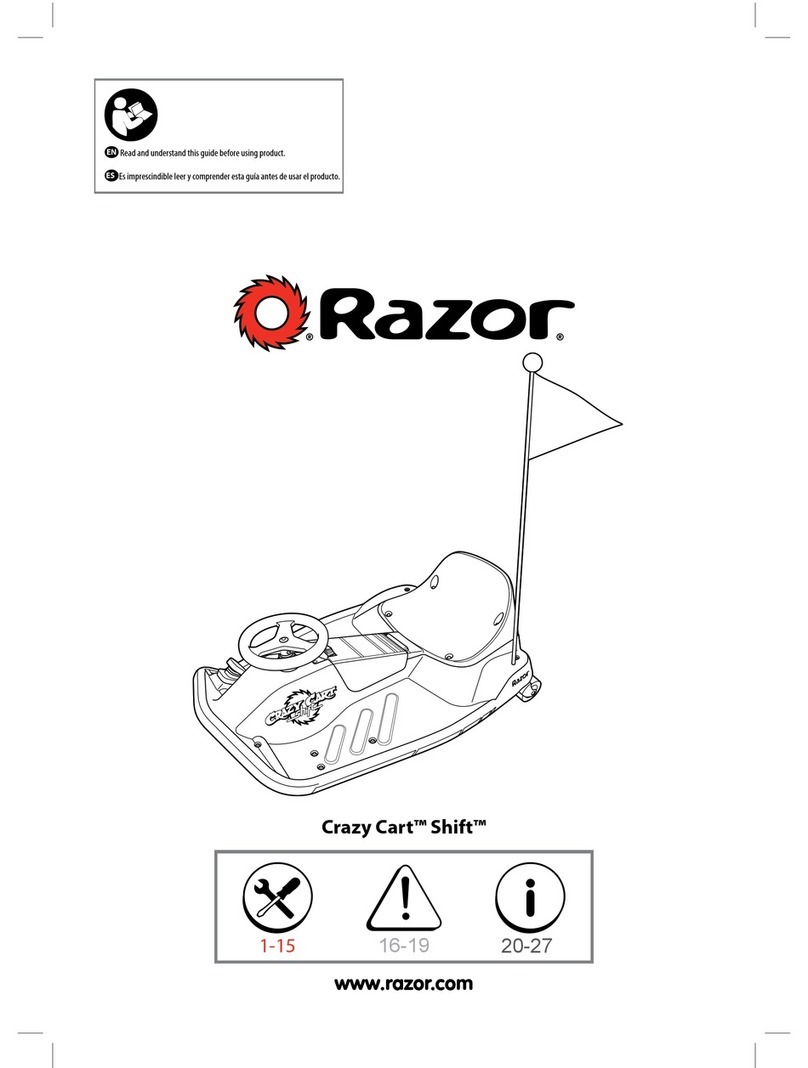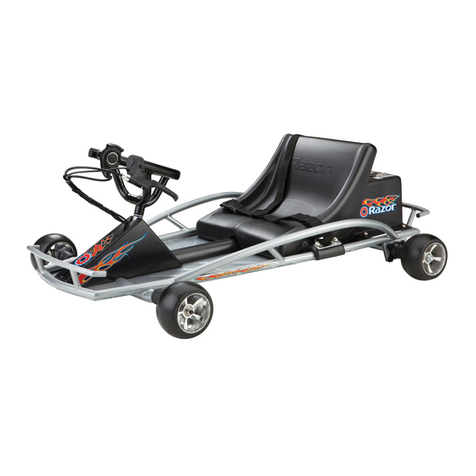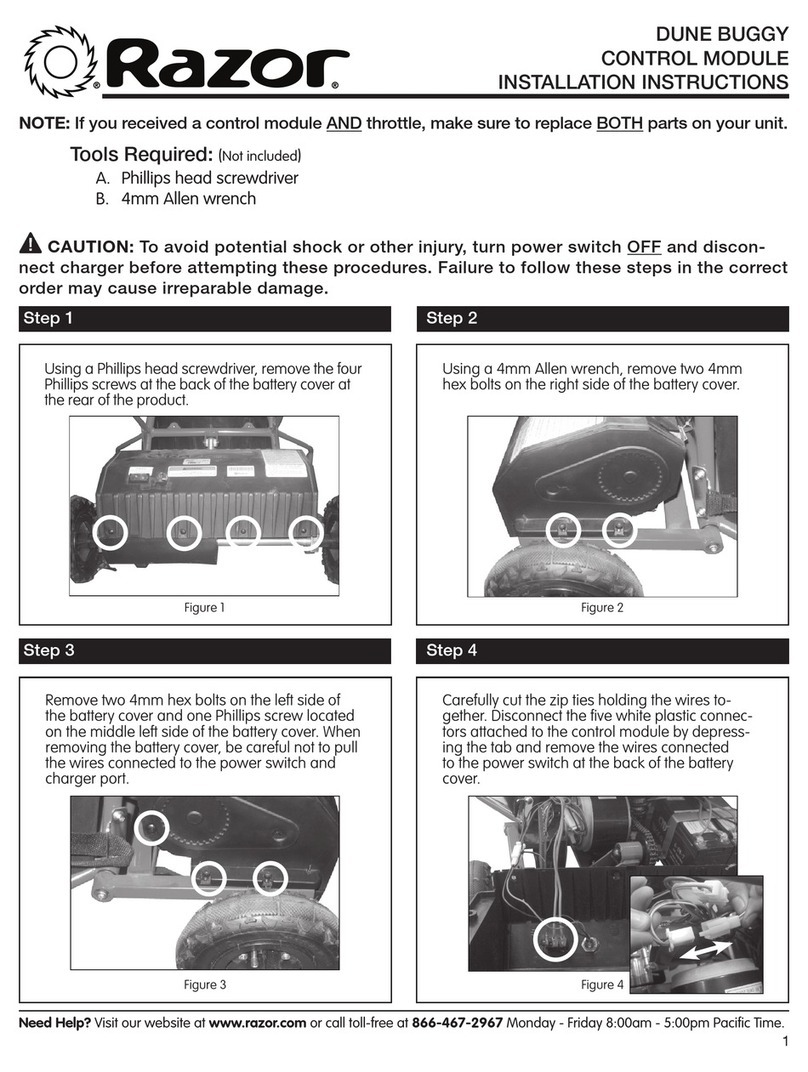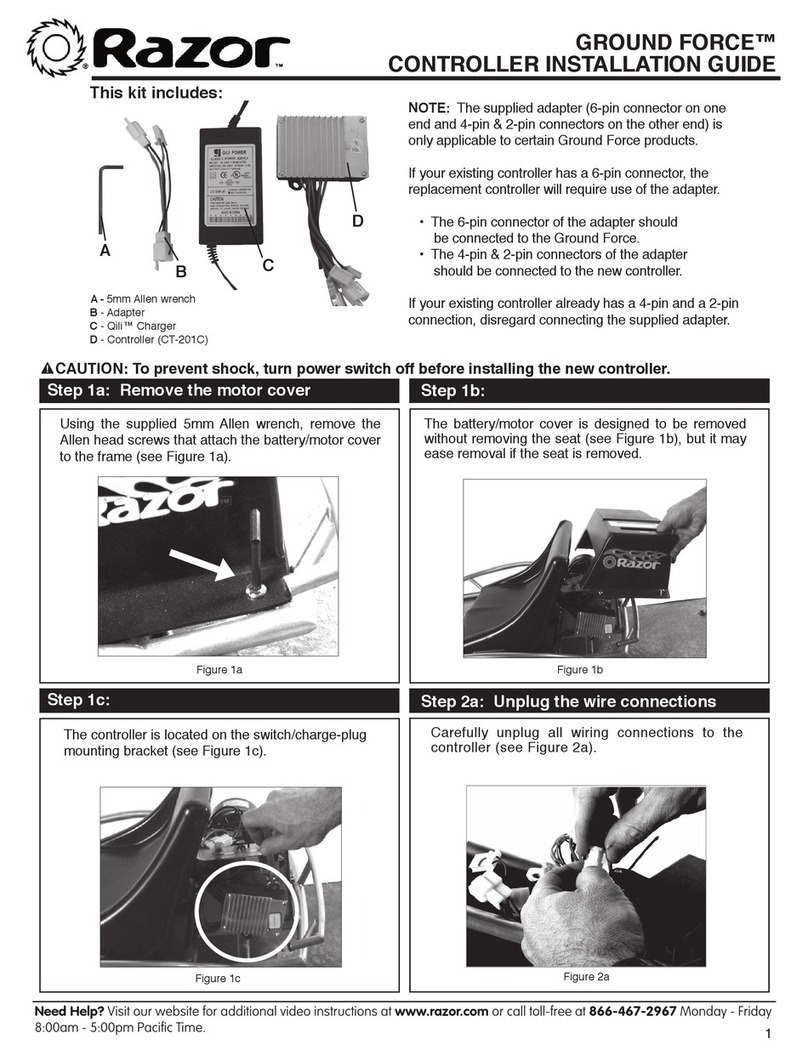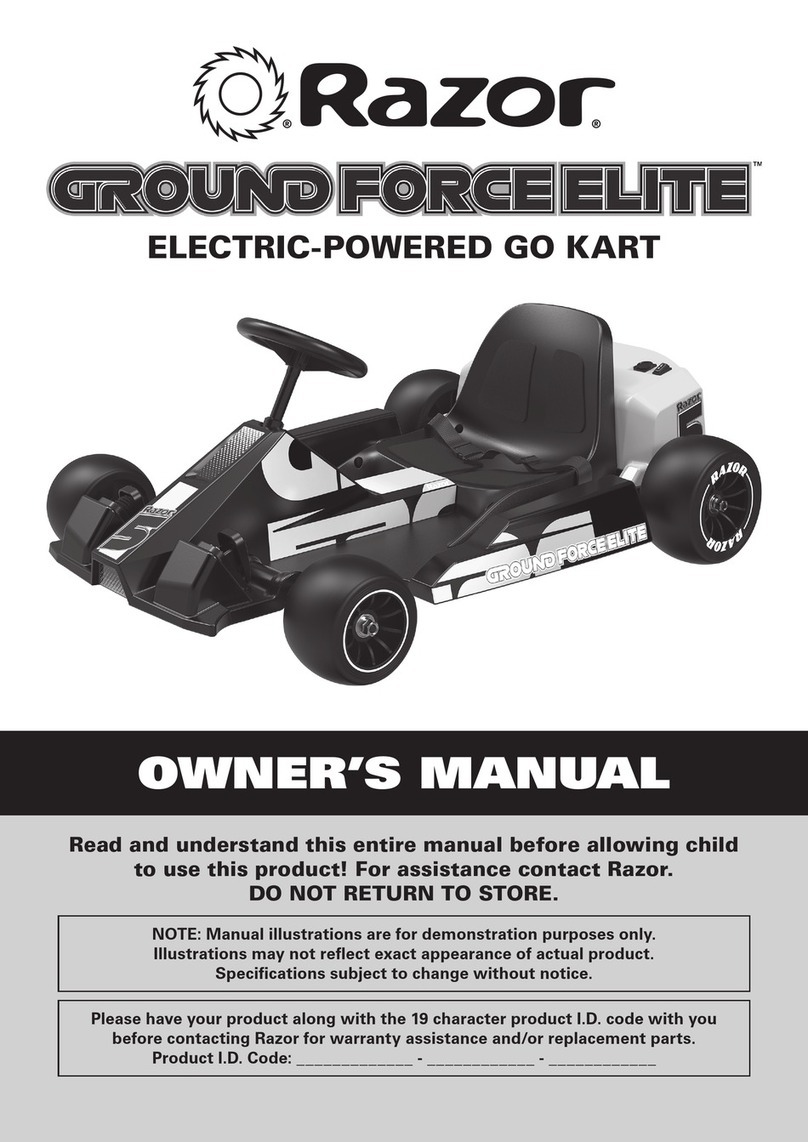3
GENERAL WARNING: Driving the Ground Force can be a hazardous activity. Electric
vehicles can, and are intended to, move and it is therefore possible to get into dangerous
situations and/or lose control and/or fall off. If such things occur you can be seriously injured or
die. LIKE ANY OTHER MOVING PRODUCT,USING THE GROUND FORCE CAN BE A
DANGEROUS ACTIVITY AND MAY RESULT IN INJURY OR DEATH EVEN WHEN USED WITH
SAFETY EQUIPMENT AND OTHER PRECAUTIONS. USE AT YOUR OWN RISK AND USE
COMMON SENSE.
• Always check and obey any local laws or regulations which may affect the locations where the
Ground Force may be used on public property. The Ground Force is meant to be used only in
controlled environments free of potential traffic hazards, and not on public streets or sidewalks.
Do not try to ride your Ground Force on public streets or in any areas where pedestrian or
vehicle traffic may present a risk of collision or injury to yourself or others. Watch out for potential
obstacles including pedestrians, skaters, skateboards, scooters, bikes, children or animals who
may enter your path, and respect the rights and property of others.
• Do not ride the Ground Force in wet weather and never immerse the Ground Force in water, as
the electrical and drive components of the Ground Force could be damaged by water or create
other possibly unsafe conditions.
• The Ground Force is designed to perform best outdoors on solid flat, clean and dry surfaces.
Wet, slick or uneven and rough surfaces may impair traction and contribute to possible accidents.
Use only on flat, dry, level ground without loose debris, such as rocks or gravel. Do not drive the
Ground Force in mud, ice, puddles or water. Avoid excessive speeds that can be associated with
downhill rides. Never risk damaging indoor surfaces such as carpet or flooring by use of a
Ground Force indoors.
• Do not ride at night or in impaired visibility conditions.
• Always wear proper protective equipment, such as an approved safety helmet, elbow pads and
kneepads. A helmet may be legally required by local law or regulation in your area, and should
always be worn when driving a Ground Force. Always wear shoes, never drive barefooted or in
sandals, and keep shoelaces tied and out of the way of the wheels, motor and drive system.
• The electric motor in your Ground Force can become hot when in use. Do not touch the motor
and handle the Ground Force carefully.
• Do not exceed the weight limit of 120 pounds (see warning on back page).
• Do not attempt or do stunts or tricks on your Ground Force. The Ground Force is not made to
withstand abuse from misuse such as jumping, curb grinding or any other type of stunts.
• The charger supplied with the Ground force should be regularly examined for damage to the
cord, plug, enclosure, and other parts and in the event of such damage, the kart must be not
charged until it has been repaired or replaced.
• Use only with the recommended charger.
• The charger is not a toy.
• If wiping down and cleaning your Ground Force with liquid, always disconnect from the charger
before cleaning.
• Refer to the chapter on Safety for additional warnings.
FAILURE TO USE COMMON SENSE AND HEED THE ABOVE WARNINGS FURTHER
INCREASES RISK OF SERIOUS INJURY. USE AT YOUR OWN RISK AND WITH APPROPRIATE
AND SERIOUS ATTENTION TO SAFE OPERATION. USE CAUTION.
